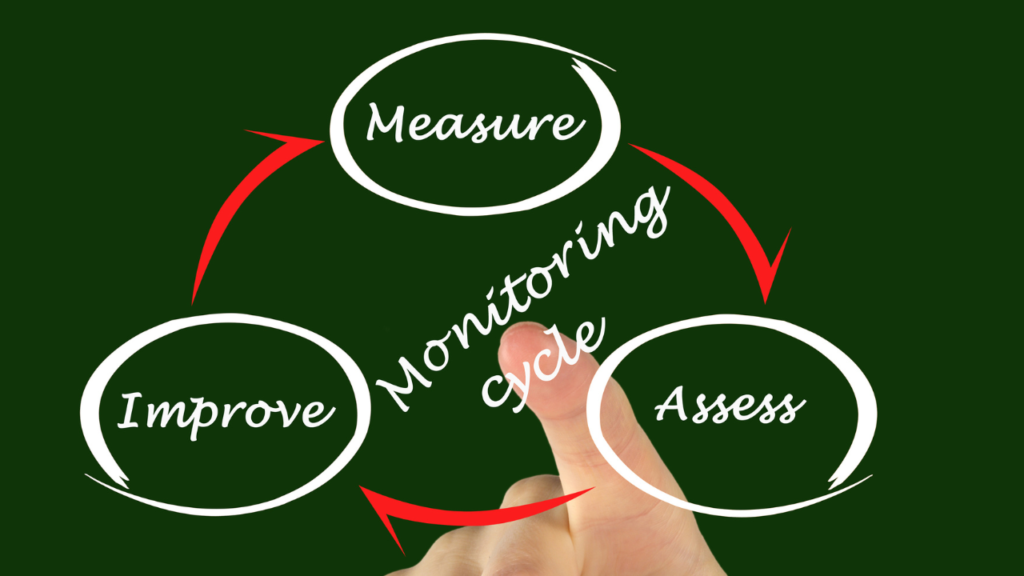Understanding AI Automation Agency ROI
Return on Investment (ROI) in the context of AI automation agencies refers to the measurable benefits gained from investments made in automation technologies and processes. It is a critical metric that helps businesses evaluate the effectiveness of their automation strategies. By calculating ROI, agencies can determine whether the financial and operational resources allocated to AI initiatives yield satisfactory returns. A positive ROI indicates that the benefits, such as increased efficiency, reduced operational costs, and enhanced service delivery, outweigh the initial investments. Conversely, a negative ROI signals the need for reassessment and potential adjustments in strategy.
Maximizing ROI is essential for AI automation agencies, as it directly impacts profitability and sustainability. In a competitive landscape, agencies must not only implement automation but also ensure that these technologies deliver tangible results. This involves a thorough understanding of the specific goals and objectives that automation aims to achieve. By aligning automation efforts with business outcomes, agencies can enhance their operational efficiency and drive growth. Ultimately, a focus on maximizing ROI fosters a culture of continuous improvement, enabling agencies to adapt to changing market demands while ensuring that their investments in AI automation yield the highest possible returns.
Streamlining Operations with Automation

In business environment, identifying areas for automation is crucial for enhancing operational efficiency. Organizations often overlook repetitive tasks that consume valuable time and resources. By conducting a thorough analysis of workflows, businesses can pinpoint these tasks and prioritize them for automation. Common areas ripe for automation include:
- Data Entry: Automating data entry processes reduces human error and frees up employees for more strategic tasks.
- Customer Support: Implementing chatbots can handle routine inquiries, allowing human agents to focus on complex issues.
- Marketing Campaigns: Automating email marketing and social media posting can ensure timely and consistent communication with clients.
Once areas for automation are identified, the next step is to implement efficient automation tools and processes. Selecting the right technology is essential; businesses should look for tools that integrate seamlessly with existing systems. Popular automation platforms offer features like:
- Customizable Workflows: Tailoring workflows to specific business needs enhances productivity.
- Real-Time Analytics: Monitoring performance metrics allows for immediate adjustments and improvements.
- User-Friendly Interfaces: Ensuring that tools are easy to use encourages team adoption and minimizes training time.
Moreover, it is vital to foster a culture of continuous improvement. Regularly reviewing automated processes can reveal new opportunities for efficiency gains. By embracing automation, organizations not only streamline operations but also position themselves for sustainable growth in an increasingly competitive landscape.
Optimizing Resource Allocation

Effective resource allocation is crucial for maximizing ROI in an AI automation agency. To achieve this, organizations must first assess their current use of both human and technological resources. This involves identifying skill gaps among team members and recognizing areas where automation can take over repetitive tasks. By reallocating human resources to more strategic roles, agencies can enhance productivity and innovation.
One strategy for optimizing resource allocation is to implement a skills inventory. This tool helps managers understand the strengths and weaknesses of their team, allowing for better alignment of tasks with individual capabilities. Additionally, it’s essential to regularly review the performance of existing technologies. Are they delivering the expected results? If not, it may be time to consider reallocating budget and resources towards more effective solutions.
Another effective approach is to adopt a flexible resource management model. This model allows agencies to quickly adapt to changing demands, whether that means scaling up human resources during peak periods or investing in new technologies that can automate processes. By fostering a culture of agility, organizations can respond to market changes more effectively, ensuring that both human and technological resources are utilized to their fullest potential.
Furthermore, leveraging data analytics can provide insights into resource performance. By analyzing metrics related to productivity and efficiency, agencies can make informed decisions about where to allocate resources for maximum impact. This data-driven approach not only enhances operational efficiency but also contributes to a more strategic allocation of resources, ultimately leading to improved ROI.
Enhancing Data Analytics and Reporting

In the realm of AI automation, leveraging data analytics is crucial for tracking performance and understanding the return on investment (ROI). By employing advanced analytics tools, agencies can gather and analyze vast amounts of data, transforming it into meaningful insights. This process enables businesses to pinpoint trends, measure the effectiveness of automation strategies, and identify areas for improvement. For instance, utilizing predictive analytics can help forecast future performance based on historical data, allowing for proactive adjustments to strategies.
Customizing reporting is equally important. Agencies should focus on creating tailored reports that cater to the specific needs of stakeholders. This involves selecting key performance indicators (KPIs) that align with business objectives and presenting them in a clear, concise manner. By doing so, decision-makers can quickly grasp the effectiveness of their automation efforts and make informed choices. Regularly scheduled reporting intervals can also ensure that insights remain relevant and actionable.
- Utilize dashboards for real-time data visualization.
- Incorporate feedback loops to refine data collection methods.
- Engage stakeholders in the reporting process to enhance relevance.
Ultimately, the goal is to create a robust framework for data analytics and reporting that not only tracks ROI but also drives continuous improvement. By focusing on actionable insights, agencies can adapt their strategies to maximize efficiency and effectiveness, ensuring that every dollar spent on AI automation yields the highest possible return.
Implementing Cost-Effective AI Solutions

In the rapidly evolving landscape of technology, selecting cost-efficient AI technologies is crucial for businesses aiming to enhance their operations without breaking the bank. Organizations should begin by conducting a thorough analysis of their specific needs and identifying which AI solutions align with their objectives. This involves evaluating various platforms and tools that offer the best value for money while ensuring they meet the desired functionality.
One effective strategy for reducing operational costs while maintaining effectiveness is to leverage open-source AI tools. These tools often provide robust capabilities without the hefty licensing fees associated with proprietary software. Additionally, businesses can explore cloud-based AI services, which typically operate on a pay-as-you-go model, allowing for flexibility in scaling resources according to demand.
Another approach is to implement automation in repetitive tasks, freeing up human resources for more strategic initiatives. By automating processes such as data entry, customer support, and inventory management, companies can significantly reduce labor costs while improving accuracy and efficiency.
Furthermore, organizations should consider investing in AI training for existing staff. This not only enhances the skill set of the workforce but also reduces the need for hiring specialized personnel, which can be costly. By empowering employees with the knowledge to utilize AI tools effectively, businesses can maximize their return on investment.
Ultimately, the key to implementing cost-effective AI solutions lies in a strategic approach that balances innovation with budget constraints. By carefully selecting technologies, automating processes, and investing in employee training, organizations can achieve significant cost savings while still reaping the benefits of advanced AI capabilities.
Improving Client Satisfaction and Retention

AI automation plays a pivotal role in enhancing client experiences, transforming the way businesses interact with their customers. By leveraging AI-driven tools, agencies can provide personalized services that cater to individual client needs. For instance, chatbots can handle inquiries 24/7, ensuring that clients receive immediate responses, which significantly boosts satisfaction levels. Additionally, AI can analyze client behavior and preferences, allowing agencies to tailor their offerings and communications effectively.
To further increase client satisfaction and retention rates, consider implementing the following strategies:
- Personalization: Utilize AI algorithms to analyze client data and deliver customized recommendations, ensuring that clients feel valued and understood.
- Proactive Communication: Use automation to send timely updates and reminders, keeping clients informed and engaged throughout their journey.
- Feedback Loops: Implement automated surveys and feedback mechanisms to gather client insights, enabling continuous improvement of services.
- Predictive Analytics: Employ AI to anticipate client needs and preferences, allowing for proactive service adjustments that enhance overall satisfaction.
By focusing on these strategies, agencies can not only improve client experiences but also foster long-term relationships that drive loyalty and retention. Satisfied clients are more likely to refer others, creating a positive feedback loop that benefits the agency’s growth and reputation. In a competitive landscape, prioritizing client satisfaction through AI automation is not just an option; it’s a necessity for sustainable success.
Continuous Monitoring and Improvement

To truly maximize ROI in an AI automation agency, regular assessment and adjustment of strategies are essential. This involves not only tracking performance metrics but also being agile enough to pivot when necessary. Establishing a routine for evaluating the effectiveness of implemented automation tools and processes can reveal insights that drive further optimization. Consider the following best practices:
- Set Clear KPIs: Define key performance indicators that align with your business goals. These metrics should be specific, measurable, achievable, relevant, and time-bound (SMART).
- Utilize Real-Time Analytics: Leverage real-time data analytics to monitor operations continuously. This allows for immediate adjustments based on performance trends.
- Solicit Feedback: Regularly gather feedback from team members and clients. Their insights can highlight areas for improvement that may not be immediately apparent through data alone.
- Benchmark Against Industry Standards: Compare your performance metrics with industry benchmarks. This can help identify gaps and opportunities for enhancement.
- Iterate on Processes: Adopt an iterative approach to process improvement. Test new strategies on a small scale before full implementation to assess their impact.
By embedding a culture of continuous improvement, agencies can not only enhance their operational efficiency but also ensure that their AI solutions remain relevant and effective. This proactive stance fosters a dynamic environment where innovation thrives, ultimately leading to sustained growth and increased ROI.



